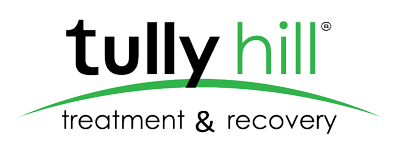This column addresses the integration of EAPs with other workplace services. This particular article explores what employee assistance providers can do to better manage the behavioral health risks of the workplaces they serve.
Why Risk Management is Needed
1. A key reason for better managing behavioral health risks is simply because they are so common in most workplaces. Recent epidemiologic research indicates that 20% of full-time workers in the U.S. meet criteria for diagnosis at a clinical level for having one or more behavioral health disorders in past 12-months. This rate increases to 1 in 3 over a person’s lifetime.
Behavioral health conditions include anxiety disorders, phobias, substance abuse disorders, and other forms of addictions (i.e., gambling, sex, food). Yet, studies show that the majority of at-risk workers do not get the appropriate clinical treatment they need. In addition, there are also unpredictable behavioral health risks associated with experiencing critical incidents in the workplace such as violence, robberies, accidents, or suicides.
2. A second reason to better manage behavioral health risks is the large costs they can have on employers. A recent global research review that I conducted with data from over 130,000 employees users of EAP counseling showed that, on average, durng the month preceeding use of the EAP, 27% of employees had missed work and more than half (56%) had a problem being fully productive when they were at work (i.e., presenteeism). This adds up to 66 hours of lost productive work time from combined absenteeism and presenteeism per employee during the month before seeking help from the EAP. Using an hourly compensation rate of $35 (the most recent national average in the private sector in the US from December 2016), this adds up to a cost of over $2,300 for just one month of work! If the typical distressed employee has an episode of distress lasting three months, the workplace cost increases to almost $7, 000.
For a company with 1,000 employees, 20% of whom are at-risk, the total cost adds up to $1.4 million in lost productivity. (This is assuming the employees are left unreated.) Costs can run even higher when also taking into account areas such as disability claims, increased health care claims, and others.
All told, it is clear that corporate clients of EAPs have good reason to be concerned about behavioral health risks. Even more important, how can EAPs become better integrated into other workplace health programs and organizational initiatives to prevent high costs from occurring?
Identifying Risks through Screenings and Referrals to the EAP
The best approach to control costs is to identify; and treat those individuals most at risk before problems become more severe and more costly. Simple tactics to start with involve creating operational processes to make cross-referrals to at-risk employees between the EAP and other related employee benefit and wellness programs (see my column in 3rd Quarter 2015 JEA for examples).
The EAP can share research-validated brief screening tools with other programs as a way of quickly flagging employees who may be at risk and could benefit from a more thorough assessment by the EAP counselor. Recommended tools include the AUDIT or MAST for alcohol, DAST for drugs, PHQ-9 for depression, GAD for anxiety, PHQ-4 for both depression and anxiety (2 items each), or the GAIN-SS for mental health and substance abuse.
Reducing Risks through EAP Counseling
Once employees at risk for mental health and addiction problems are indentifed and referred to the EAP, how effective is brief counseling in reducing clinical symptoms and work performance deficits? Reviews of over 75 research and evaluation studies of EAPs from Canada, the U.S., and the UK documented the general effectiveness of workplace mental health counseling.
This landmark study, published in 2013 by the National Behavioral Consortium, asked vendors to provide their average results for an entire year of follow-up surveys of clients who had used the EAP. Data from 45 EAP vendors revealed an industry average outcome of 86% of clients reporting an improvement in their problem after use of counseling from the EAP.
Research also shows that these improvements in clinical problems correlates with improvements in productivity and absence after EAP use.
Reducing the Cost Burden Through EAP Counseling
In a different sample size from the same global research I mentioned earlier, which in this case examined over 220,000 employee users of EAP counseling, I found that an average of 27 hours of lost productivity were restored after use of the EAP (from 66 hours lost per month before to 39 hours lost per month after). Most of this improvement in work performance was in the area of presenteeism (20.7 fewer hours) with less from absenteeism (6.6 fewer hours).
Financially speaking, using the same $35 hourly rate for employee compensation noted earlier, this reduction in cost for one month is estimated at $945 per each EAP case. If the original level of risk burden would have
continued for a three-month clinical episode if untreated, the level of workplace cost prevented by the EAP intervention would be much higher — at $2,835 per case. Performing these kinds of cost estimates can be done using EAP ROI Calculator tools (see feature article in 4th Quarter 2016 JEA). Due to improved clinical outcomes (even when clinical intervention is brief) EAPs can reduce the workplace costs associated with behavioral health conditions — and that is good news for any corporate client (and EAP) for that matter.
Summary
Focusing on behavioral health risk management offers many opportunities for EAPs. It uses the language of benefits directors and coprorate health programs rather than the more clinically oriented language typical of EAP and mental health providers. The general prevalence and high costs associated with these risks needs to be better communicated with EAP client organizations to drive demand for action on these issuses.
EAPs can also become more involved in sharing screening tools with partner programs within the organization to identify, and then refer, at-risk employees to the EAP for clinical treatment and assistance.
Finally, the effective clinical treatment provided by EAPs has been documented as reducing the levels of behavioral risks and decreasing the workplace costs typically incurred by behavioral health conditions. Each of these recommendations have already been attained by leading EAPs. My advice is to position EAPs as a risk management tool for organizations.
Resources and References
For more information about behavioral health risk research, go to the Employee Assistance Digital Archive at the University of Maryland Baltimore, where you can download (at no cost) a file of 100 slides from a recent presentation and a list of reference citations. See http://hdl.handle. net/10713/6571
DE Mark Attridge is an independent research scholar as President of Attridge Consulting, Inc., based in Minneapolis. He has created over 200 papers and conference presentations on various topics in workplace mental health, EAP, psychology and communication. He has delivered keynote presentations at EAPA World Conferences in 2013 and 2016 and is past Chair of the EAPA Research Committee. He can be reached at: mark@attridgeconsulting.com

IBY Mark Attridge, PhD
www.EAPSSN.org
Journal of Employee Assistance
3rd Quarter 2017
Article reprinted with permission from the 3rd Quarter 2017 edition of the Journal of Employee Assistance, pp. 32-33), editors Maria Lund and Mike Jacquart, published by the Employee Assistance Professional Association (EAPA).
All rights reserved. No content of this article may be copied or reproduced in any way without the expressed written consent of the EAPA.
Please note that, whereas most if not all of our older blog posts do not have appropriate, non-stigmatizing language – i.e., substance use disorder in place of addiction and/or chemical dependency – all subsequent posts do and will retain language that avoids propagating negative stereotypes and biases through the use of slang and idioms.
Likewise, we have pledged to follow the guidelines set forth by the Office of National Drug Control Policy and that are conceptually and in general endorsed by the American Society of Addiction Medicine (ASA), the federal Substance Abuse and Mental Health Services Administration (SAMHSA), and other federal and state entities governing and regulating substance use disorder. We will therefore now use person-first language that respects the worth and dignity of all people; that focuses on the medical as well as clinical nature of substance use disorders and treatment; and that promotes the recovery process.









